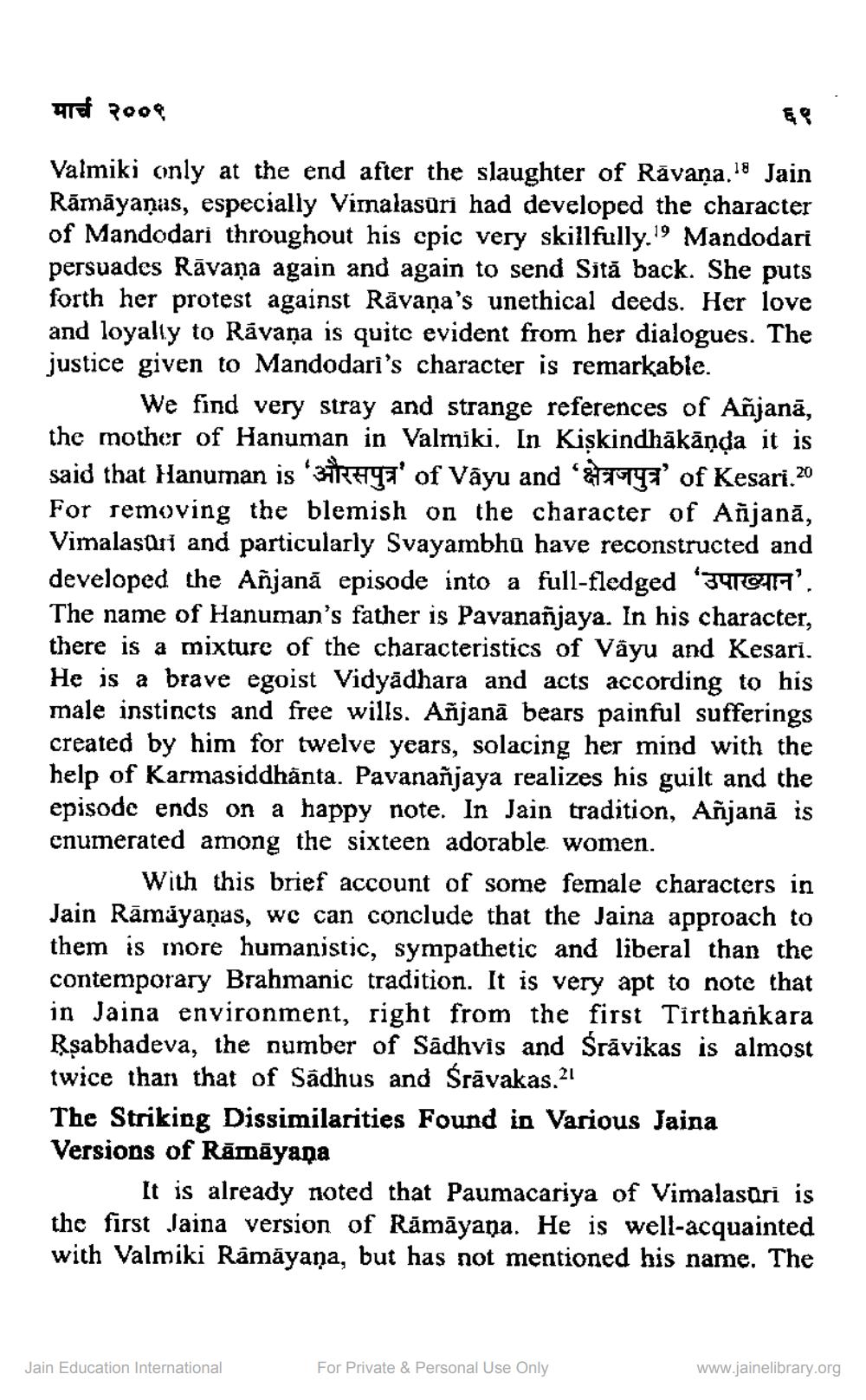________________
मार्च २००९
Valmiki only at the end after the slaughter of Rāvana. Jain Rāmāyaṇas, especially Viinalasūri had developed the character of Mandodari throughout his cpic very skillfully.'' Mandodari persuades Rāvana again and again to send Sită back. She puts forth her protest against Rāvana's unethical deeds. Her love and loyalty to Rávaņa is quite evident from her dialogues. The justice given to Mandodari's character is remarkable.
We find very stray and strange references of Añjanā, the mother of Hanuman in Valmiki, In Kiskindhākānda it is said that Hanuman is 'BARCEE' of Vāyu and E' of Kesari.20 For removing the blemish on the character of Añjanā, VimalasOri and particularly Svayambhu have reconstructed and developed the Añjanā episode into a full-fledged '341C4F'. The name of Hanuman's father is Pavanañjaya. In his character, there is a mixture of the characteristics of Väyu and Kesari. He is a brave egoist Vidyadhara and acts according to his inale instincts and free wills. Añjanā bears painful sufferings created by him for twelve years, solacing her mind with the help of Karmasiddhānta. Pavanañjaya realizes his guilt and the episode ends on a happy note. In Jain tradition, Añjanā is cnumerated among the sixteen adorable women.
With this brief account of some female characters in Jain Rāmāyaṇas, wc can conclude that the Jaina approach to them is more humanistic, sympathetic and liberal than the contemporary Brahmanic tradition. It is very apt to note that in Jaina environment, right from the first Tirtharkara Rşabhadeva, the number of Sadhvis and Srāvikas is almost twice than that of Sadhus and Srāvakas.21 The Striking Dissimilarities Found in Various Jaina Versions of Rāmāyaṇa
It is already noted that Paumacariya of Vimalasari is the first Jaina version of Rāmāyana. He is well-acquainted with Valmiki Rámāyaṇa, but has not mentioned his name. The
Jain Education International
For Private & Personal Use Only
www.jainelibrary.org




